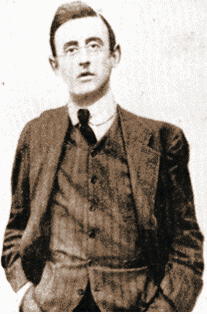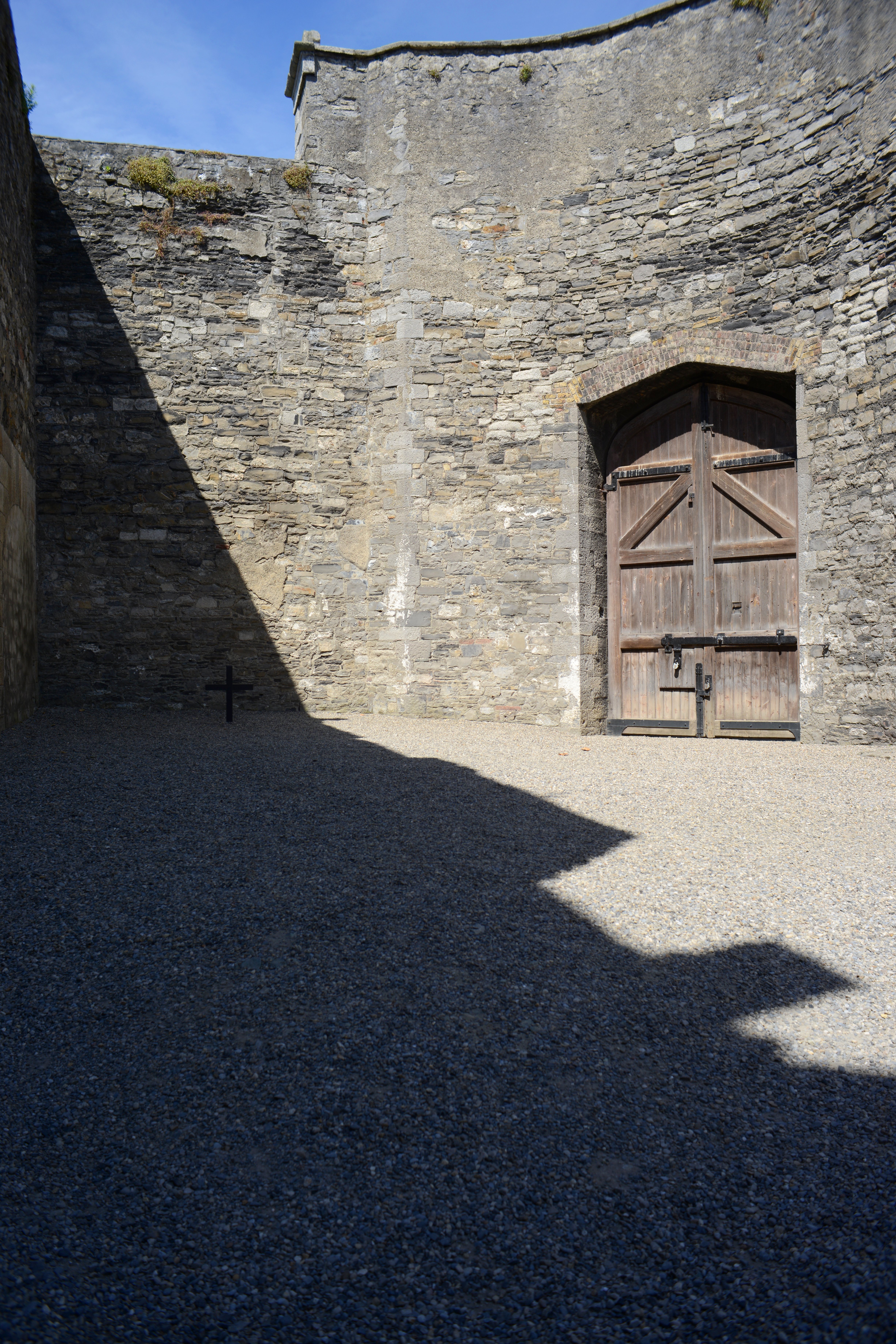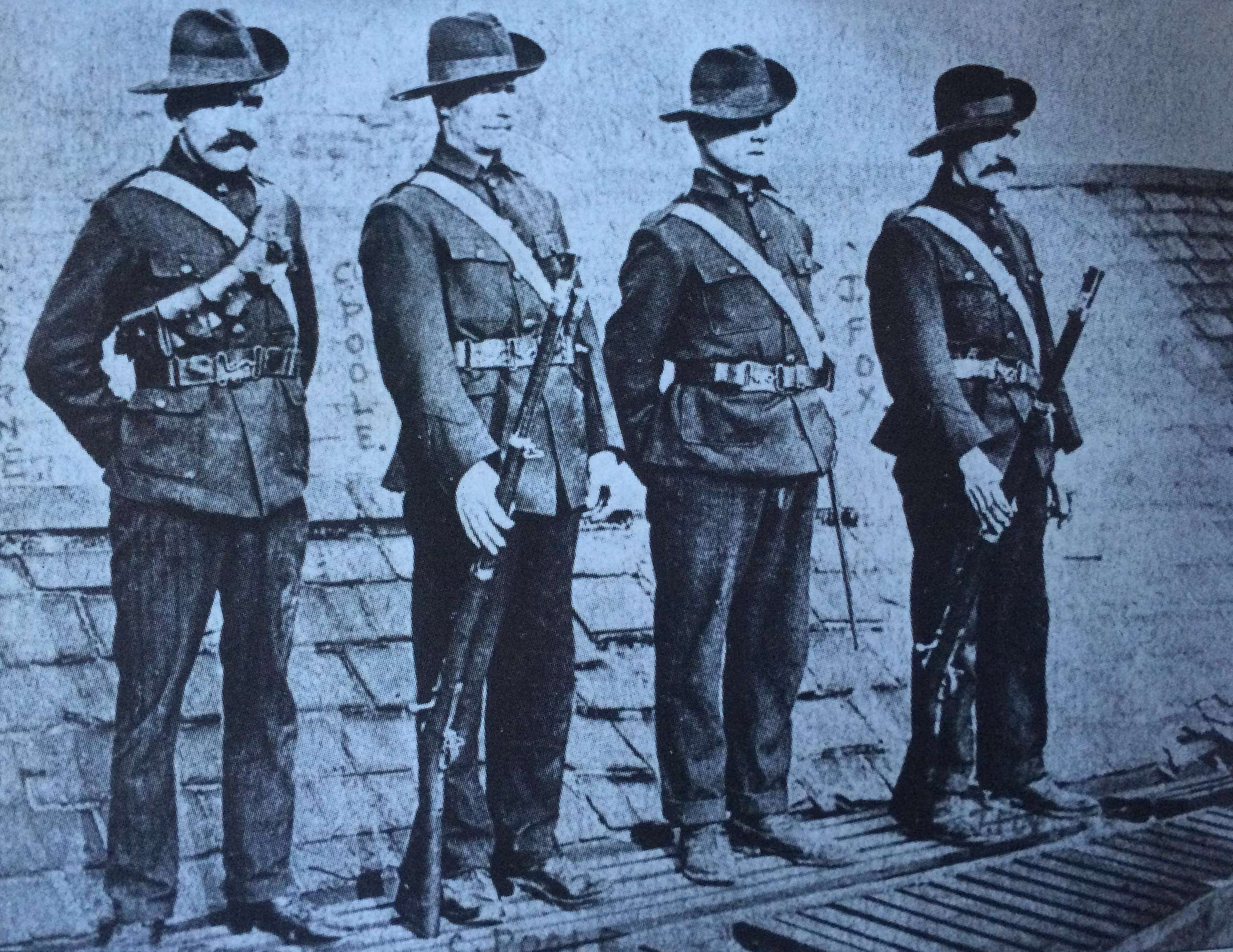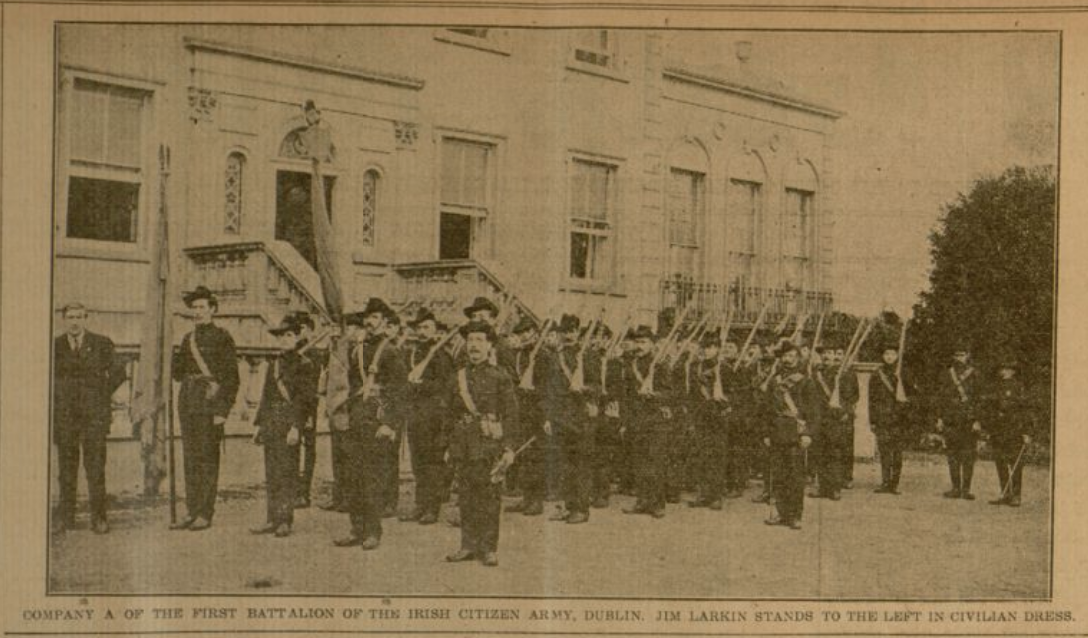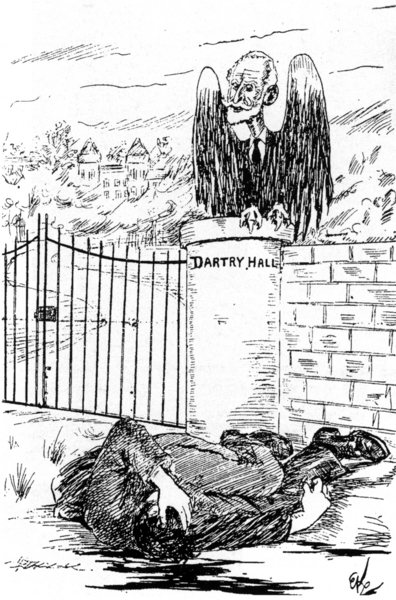|
Nellie Gifford
Nellie Gifford (9 November 1880 – 23 June 1971) was an Irish republican activist and nationalist. Early life Born Helen Ruth Gifford on 9 November 1880 in Phibsborough, Dublin to Frederick Gifford (1835/6–1917), a solicitor, and Isabella Julia Gifford (née Burton; 1847/8–1932), she was the fifth child and second eldest daughter of the family of six daughters and six sons. Her father was a Catholic while her mother, a niece of the painter Frederick Burton, was rigorously Protestant. All the children were brought up in the Church of Ireland. The men, emigrated and remained unionist while the women were active nationalists. Most famous were the two youngest, the artist Grace Gifford, and the journalist and broadcaster Sydney Czira. Gifford grew up in Rathmines and went to school at Alexandra College. She trained as a domestic economy teacher and worked for seven years at a series of positions in County Meath. Nationalism Gifford experienced the living conditions of the ... [...More Info...] [...Related Items...] OR: [Wikipedia] [Google] [Baidu] |
Phibsborough
Phibsborough (; ), also spelled Phibsboro, is a mixed commercial and residential neighbourhood on the Northside of Dublin, Ireland. The Bradogue River crosses the area in a culvert, and the Royal Canal passes through its northern reaches, notably at Cross Guns Bridge. Formerly, a branch of the canal ran to the Broadstone basin, later the site of the Midland Great Western Railway Terminus and currently the headquarters of Bus Éireann. Mountjoy Prison is located in the district. Etymology The name "Phibsborough" comes from "Phipps" or "Phibbs." This is believed to relate to the Lincolnshire settler Richard Phibbs of Coote's Horse, resident in Kilmainham from the mid-17th century. The spelling is cited as Phippsborough in 1792. Location Phibsborough is located about 2 km north of the old city centre, in Dublin 7. It is bordered by Glasnevin to the north, Drumcondra to the east, Grangegorman and Cabra to the west and the King's Inns on Constitution Hill to the south. Th ... [...More Info...] [...Related Items...] OR: [Wikipedia] [Google] [Baidu] |
Feminism
Feminism is a range of socio-political movements and ideologies that aim to define and establish the political, economic, personal, and social equality of the sexes. Feminism incorporates the position that society prioritizes the male point of view and that women are treated unjustly in these societies. Efforts to change this include fighting against gender stereotypes and improving educational, professional, and interpersonal opportunities and outcomes for women. Feminist movements have campaigned and continue to campaign for women's rights, including the right to vote, run for public office, work, earn equal pay, own property, receive education, enter contracts, have equal rights within marriage, and maternity leave. Feminists have also worked to ensure access to contraception, legal abortions, and social integration and to protect women and girls from rape, sexual harassment, and domestic violence. Changes in female dress standards and acceptable physical act ... [...More Info...] [...Related Items...] OR: [Wikipedia] [Google] [Baidu] |
Easter Rising
The Easter Rising ( ga, Éirí Amach na Cásca), also known as the Easter Rebellion, was an armed insurrection in Ireland during Easter Week in April 1916. The Rising was launched by Irish republicans against British rule in Ireland with the aim of establishing an independent Irish Republic while the United Kingdom was fighting the First World War. It was the most significant uprising in Ireland since the rebellion of 1798 and the first armed conflict of the Irish revolutionary period. Sixteen of the Rising's leaders were executed from May 1916. The nature of the executions, and subsequent political developments, ultimately contributed to an increase in popular support for Irish independence. Organised by a seven-man Military Council of the Irish Republican Brotherhood, the Rising began on Easter Monday, 24 April 1916 and lasted for six days. Members of the Irish Volunteers, led by schoolmaster and Irish language activist Patrick Pearse, joined by the smaller Irish Citizen Arm ... [...More Info...] [...Related Items...] OR: [Wikipedia] [Google] [Baidu] |
Joseph Plunkett
Joseph Mary Plunkett (Irish: ''Seosamh Máire Pluincéid''; 21 November 1887 – 4 May 1916) was an Irish nationalist, republican, poet, journalist, revolutionary and a leader of the 1916 Easter Rising. Joseph Mary Plunkett married Grace Gifford in 1916, seven hours before his execution. Background Plunkett was born at 26 Upper Fitzwilliam Street in one of Dublin's most affluent districts. Both his parents came from wealthy backgrounds, and his father, George Noble Plunkett, had been made a papal count. Plunkett contracted tuberculosis (TB) at a young age and spent part of his youth in the warmer climates of the Mediterranean and North Africa. He spent time in Algiers where he studied Arabic literature and language and composed poetry in Arabic. He was educated at the Catholic University School (CUS) and by the Jesuits at Belvedere College in Dublin and later at Stonyhurst College, in Lancashire, England where he acquired some military knowledge from the Officers' Training Co ... [...More Info...] [...Related Items...] OR: [Wikipedia] [Google] [Baidu] |
Michael Collins (Irish Leader)
Michael Collins ( ga, Mícheál Ó Coileáin; 16 October 1890 – 22 August 1922) was an Irish revolutionary period, Irish revolutionary, soldier and politician who was a leading figure in the early-20th century struggle for Irish independence. During the Irish War of Independence, War of Independence he was Director of Intelligence of the Irish Republican Army (1919–1922), Irish Republican Army (IRA) and a government minister of the self-declared Irish Republic. He was then Chairman of the Provisional Government of the Irish Free State from January 1922 and commander-in-chief of the National Army (Ireland), National Army from July until his death in an ambush in August 1922, during the Irish Civil War, Civil War. Collins was born in Michael Collins Birthplace, Woodfield, County Cork, the youngest of eight children. He moved to London in 1906 to become a clerk in the National Savings and Investments, Post Office Savings Bank at Blythe House. He was a member of the London GAA, ... [...More Info...] [...Related Items...] OR: [Wikipedia] [Google] [Baidu] |
Liberty Hall
Liberty Hall ( ga, Halla na Saoirse), in Dublin, Ireland, is the headquarters of the Services, Industrial, Professional, and Technical Union (SIPTU). Designed by Desmond Rea O'Kelly, it was completed in 1965. It was for a time the tallest building in the country, at 59.4 metres, (195 feet) high until it was superseded by the County Hall in Cork city, which was itself superseded by The Elysian in Cork. Liberty Hall is now the fourth tallest building in Dublin, after Capital Dock, Montevetro (now Google Docks) and the Millennium Tower in Grand Canal Dock. Liberty Hall is more historically significant in its earlier form, as the headquarters of the Irish Transport and General Workers Union early in the 20th century, and also as the headquarters of the Irish Citizen Army (ICA). History Standing on Beresford Place and Eden Quay, near the Custom House, the original Liberty Hall was built as the Northumberland Hotel before it became the headquarters of the Irish Citizen ... [...More Info...] [...Related Items...] OR: [Wikipedia] [Google] [Baidu] |
James Connolly
James Connolly ( ga, Séamas Ó Conghaile; 5 June 1868 – 12 May 1916) was an Irish republican, socialist and trade union leader. Born to Irish parents in the Cowgate area of Edinburgh, Scotland, Connolly left school for working life at the age of 11, and became involved in socialist politics in the 1880s. Although mainly known for his position in Irish socialist and republican politics, he also took a role in Scottish and American politics. He was a member of the Industrial Workers of the World and founder of the Irish Socialist Republican Party. With James Larkin, he was centrally involved in the Dublin lock-out of 1913, as a result of which the two men formed the Irish Citizen Army (ICA) that year; they also founded the Irish Labour Party along with William O'Brien. Connolly was the long term right-hand man to Larkin in the Irish Transport and General Workers' Union (ITGWU) until taking over leadership of both the union and its military wing the ICA upon Larkin's departu ... [...More Info...] [...Related Items...] OR: [Wikipedia] [Google] [Baidu] |
Irish Citizen Army
The Irish Citizen Army (), or ICA, was a small paramilitary group of trained trade union volunteers from the Irish Transport and General Workers' Union (ITGWU) established in Dublin for the defence of workers' demonstrations from the Dublin Metropolitan Police. It was formed by James Larkin, James Connolly and Jack White on 23 November 1913. Other prominent members included Seán O'Casey, Constance Markievicz, Francis Sheehy-Skeffington, P. T. Daly and Kit Poole. In 1916, it took part in the Easter Rising, an armed insurrection aimed at ending British rule in Ireland. Following the Easter Rising, the death of James Connolly and the departure of Jim Larkin, the ICA largely sidelined itself during the Irish War of Independence by choosing to only offer material support to the Irish Republican Army and not become directly involved itself. Following the ICA's declaration in July 1919 that members could not be simultaneously members of both the ICA and the IRA, combined with t ... [...More Info...] [...Related Items...] OR: [Wikipedia] [Google] [Baidu] |
Imperial Hotel, Dublin
The Imperial Hotel was a hotel in Dublin's principal thoroughfare, Sackville Street, until it was destroyed during the Easter Rising of 1916. The building comprised Clerys department store on the lower floors and the Imperial Hotel on upper floors situated opposite the General Post Office and Nelson's Pillar. History The hotel was located in Dublin's principal thoroughfare, Lower Sackville Street, described by William Thackeray as an "exceedingly broad and handsome" street. Dublin Corporation voted to rename the street as O'Connell Street on 4 May 1924. Writing in 1844, and by way of tourist advice the German, Herr J. Venedy, wrote of the hotel: Pictorial evidence from 1850 shows a four window wide building at 21–22 Lower Sackville Street opposite the General Post Office. The hotel name certainly was in use from at least 1843. In 1853, it was rebuilt by William Francis Caldbeck, an amateur architect, into an eight window wide building that also housed Clerys department ... [...More Info...] [...Related Items...] OR: [Wikipedia] [Google] [Baidu] |
James Larkin
James Larkin (28 January 1874 – 30 January 1947), sometimes known as Jim Larkin or Big Jim, was an Irish republican, socialist and trade union leader. He was one of the founders of the Irish Labour Party along with James Connolly and William O'Brien, and later the founder of the Irish Worker League (a communist party which was recognised by the Comintern as the Irish section of the world communist movement), as well as the Irish Transport and General Workers' Union (ITGWU) and the Workers' Union of Ireland (the two unions later merged to become SIPTU, Ireland's largest trade union). Along with Connolly and Jack White, he was also a founder of the Irish Citizen Army (ICA; a paramilitary group which was integral to both the Dublin lock-out and the Easter Rising). Larkin was a leading figure in the Syndicalist movement. Larkin was born to Irish parents in Toxteth, Liverpool, England. Growing up in poverty, he received little formal education and began working in a variety of j ... [...More Info...] [...Related Items...] OR: [Wikipedia] [Google] [Baidu] |
Dublin Lock-out
The Dublin lock-out was a major industrial dispute between approximately 20,000 workers and 300 employers that took place in Ireland's capital and largest city, Dublin. The dispute, lasting from 26 August 1913 to 18 January 1914, is often viewed as the most severe and significant industrial dispute in Irish history. Central to the dispute was the workers' right to unionise. Background Poverty and housing Many of Dublin's workers lived in terrible conditions in tenements. For example, over 830 people lived in just 15 houses in Henrietta Street's Georgian tenements. At 10 Henrietta Street, the Irish Sisters of Charity ran a laundry that was inhabited by more than 50 single women. An estimated four million pledges were taken in pawnbrokers every year. The infant mortality rate among the poor was 142 per 1,000 births, extraordinarily high for a European city. The situation was made considerably worse by the high rate of disease in the slums, which was worsened by the lack of ... [...More Info...] [...Related Items...] OR: [Wikipedia] [Google] [Baidu] |
Casimir Markievicz
Casimir Dunin Markievicz ( pl, Kazimierz Dunin-Markiewicz , 15 March 1874 – 2 December 1932), known as Count Markievicz, was a Polish playwright, theatre director, and painter, and the husband of the Irish revolutionary Constance Markievicz. Early life and marriage The Dunin Markievicz family held land in Malopolska Province (today Ukraine), and had an estate in a town of Zywotow ( pl, Żywotówka; now ) where Casimir grew up. Markievicz attended the State Gymnasium in Kherson, and studied law at the University in Kyiv which at that time still held a vast Polish minority.Timothy Snyder. (2003). ''The Reconstruction of Nations.'' New Haven: Yale University Press. pp. 120-122 In 1895, he transferred to the École des Beaux-Arts in Paris. While in Paris, he met and married Jadwiga Splawa-Neyman. They had two sons, Stanislas and Ryszard, but the marriage did not last. Jadwiga returned to Ukraine where she and Ryszard died in 1899. He met Constance Gore-Booth in 1899, and the two ... [...More Info...] [...Related Items...] OR: [Wikipedia] [Google] [Baidu] |



